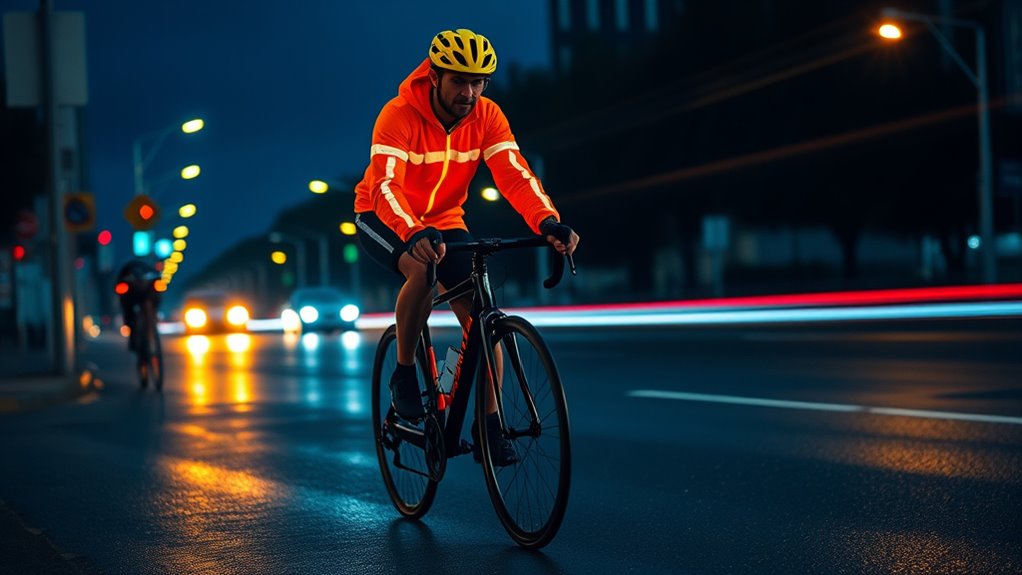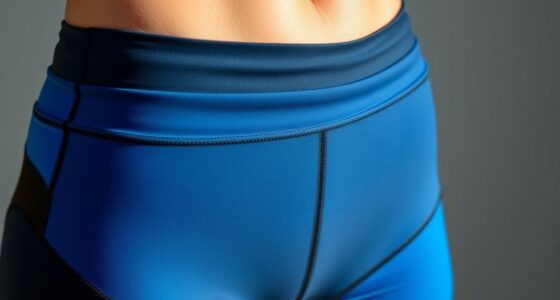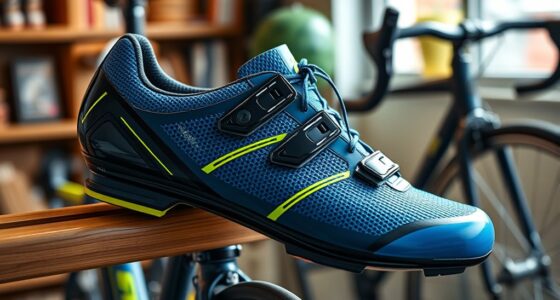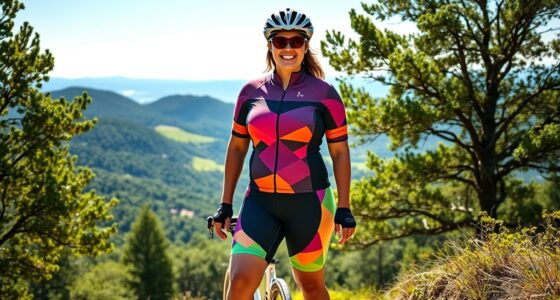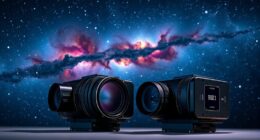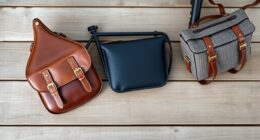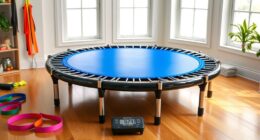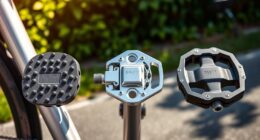To stay visible at night, choose high-contrast colors like neon yellow, orange, or lime green that stand out against dark backgrounds. Combining these with reflective materials, such as strips or patches, enhances your safety by bouncing back light from headlights or streetlights. Regularly check that reflectivity is clean and intact. Wearing a mix of bright colors and reflective elements makes your presence unmistakable in low-light conditions—keep exploring to learn more about maximizing your visibility.
Key Takeaways
- Use bright, high-contrast colors like neon yellow, orange, or lime green for clothing to enhance daytime and nighttime visibility.
- Incorporate reflective strips or patches on clothing and accessories to bounce back light from headlights and streetlights.
- Combine high-visibility colors with reflective materials for maximum safety during low-light or night conditions.
- Ensure reflective elements are strategically placed on shoulders, chest, or back and are regularly maintained for effectiveness.
- Equip vehicles with reflective decals or lights to improve their visibility from a distance in dark environments.

Choosing the right color for your clothing or vehicle can be pivotal in how well you’re seen at night. When visibility is limited, color choice becomes essential in helping others notice you from a distance. Bright, high-contrast colors like neon yellow, orange, or lime green are excellent options because they naturally stand out against dark backgrounds. These colors catch the eye quickly, making it easier for drivers or passersby to spot you before it’s too late. However, color alone isn’t enough. Incorporating reflective materials into your clothing or vehicle can greatly enhance your visibility. Reflective strips, patches, or accessories bounce back light from headlights or streetlights, alerting others to your presence even in poor lighting conditions. Clothing visibility is improved when reflective elements are strategically placed on areas most likely to be seen, such as shoulders, chest, or back.
You should always opt for clothing that combines high-visibility colors with reflective materials for the best results. This combination ensures that you’re not only visible during the day but remain noticeable at night or in low-light situations. For example, a safety vest made of bright yellow fabric with reflective strips is far more effective than plain, dark clothing. When you’re cycling, jogging, or walking along roads, wearing such gear dramatically reduces the risk of accidents. For drivers, choosing a vehicle with reflective decals or lights enhances night-time visibility, making it easier for others to see your vehicle’s outline from a distance. Keep in mind that reflective materials are especially useful in areas with minimal street lighting since they depend on external light sources to work effectively. Additionally, understanding the importance of reflectivity can guide you in selecting the most effective gear for night safety.
It’s also vital to consider how you combine colors and reflective elements. Wearing dark clothing with reflective accessories is often more effective than trying to rely solely on bright clothing, which can sometimes blend into the environment if not sufficiently contrasted. When you’re outdoors at night, the goal is to maximize your clothing visibility and ensure that your presence is unmistakable to others. Regularly inspect your gear to make sure reflective elements are clean and intact, as dirt or damage can diminish their effectiveness. Ultimately, the key is to balance color choice with reflective materials so that you’re visible from a distance and easily recognizable in dim lighting. By doing so, you’ll greatly improve your safety and ensure that others can see you clearly when it matters most.
Frequently Asked Questions
How Does Weather Affect Visibility at Night?
Weather conditions like fog and rain substantially reduce your visibility at night. Fog creates a dense curtain, making it hard to see far ahead, while rain can wash away reflective surfaces and diminish light. You need to slow down, turn on your headlights, and increase your following distance. Pay extra attention to your surroundings, as these conditions make it harder for you to spot hazards and other drivers on the road.
Are Reflective Vests Effective in Low-Light Conditions?
Reflective vests are highly effective in low-light conditions because they use high visibility fabrics and reflective strips that bounce back light from headlights or streetlights. When you wear one, it considerably enhances your visibility to drivers, reducing the risk of accidents. The reflective strips catch and reflect light from various angles, making you more noticeable even in poor lighting, ensuring you stay safer during night activities or roadside work.
What Materials Improve Night Visibility Besides Color?
Did you know that illuminated fabrics can boost your night visibility by up to 80%? Besides color, materials like reflective trims and illuminated fabrics considerably improve your safety. Reflective trims catch headlights and shine brightly, while illuminated fabrics actively light up, making you more noticeable in low-light conditions. Incorporate these materials into your gear to guarantee you stand out and stay safe during nighttime activities.
How Do Different Lighting Conditions Influence Color Visibility?
Different lighting conditions significantly influence how you perceive color contrast and contrast perception. Under bright daylight, vivid colors stand out sharply, making you more visible. At night or in low light, your eyes rely more on contrast perception, so high-contrast colors like white or fluorescent shades become essential for visibility. Dull or dark colors blend into shadows, reducing visibility, so choose colors that maximize contrast against your background in varying lighting.
Can Clothing Color Impact Safety in Urban Versus Rural Areas?
Clothing color is your lighthouse in the fog of urban and rural areas. In cities, bright or reflective clothing slices through urban lighting, guiding drivers and cyclists safely. In rural settings, earthy tones blend with nature, but adding reflective materials boosts visibility during low-light hours. Your clothing material and color work together like a beacon, ensuring you’re seen and safe no matter where you are.
Conclusion
When you choose bright, reflective colors, you’re turning yourself into a beacon in the dark—a lighthouse guiding safety through the night fog. Your clothing becomes a shining signal, cutting through shadows like a flash of lightning. Remember, your visibility is your armor; it keeps you safe and seen when it matters most. So, pick colors that glow and reflect, transforming your night journey into a walk under the sun’s protective glare. Stay bright, stay safe.
